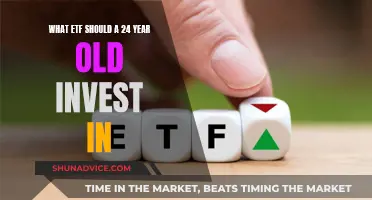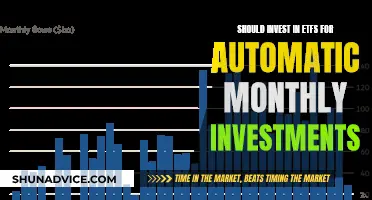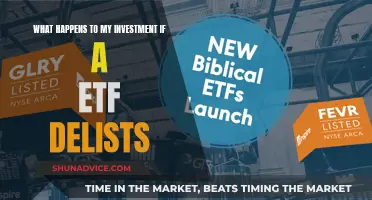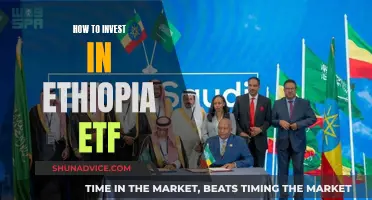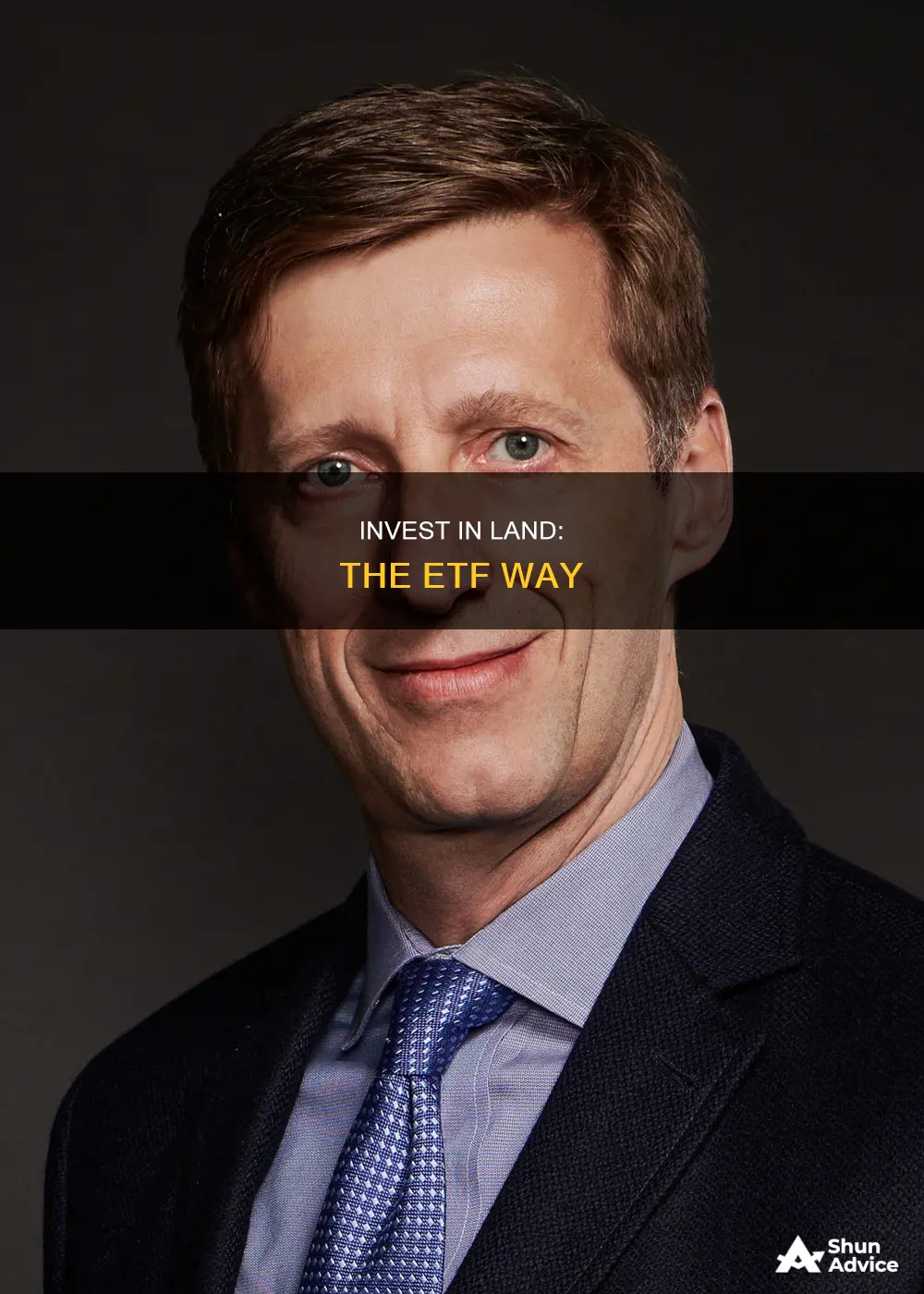
Investing in land can be a risky business, as buying raw land may not generate any income and may not result in a capital gain when the property is sold. However, with land being a finite resource, investors are often encouraged to explore land-related investment options, such as exchange-traded funds (ETFs). ETFs are a solid choice for small investors as they do not require direct management, are broadly diversified, and can be purchased or sold in real time. They also allow investors to avoid the high upfront costs and intimate knowledge of the industry usually required for land investment.
ETFs are a form of investment that can be purchased through a brokerage account. They are a popular way to invest in farmland, with the largest commodities-based farmland ETF being the Invesco DB Agriculture Fund (NYSE: DBA), and the biggest ETF holding farm and farm equipment stocks being the VanEck Agribusiness ETF (NYSE: MOO). These ETFs often pay dividends, giving investors two ways to profit.
There are a variety of ETFs available that cover most land-based investment categories, including timber, minerals, and farming. For example, the Invesco MSCI Global Timber ETF (CUT) tracks the performance of timber companies and includes holdings in firms that own or lease forested land.
For investors looking to diversify their portfolios, ETFs are a great way to gain exposure to the farming industry and benefit from the above-average total returns that farmland has to offer.
| Characteristics | Values |
|---|---|
| Investment options | ETFs, ETNs, REITs, stocks, crowdfunding platforms, mutual funds |
| Investment types | Timber farms, mineral development lands, vegetable gardens, orchards, vineyards, recreational land, residential and commercial land, livestock-raising land, mineral production land |
| Returns | Dividends, capital appreciation, rent, income |
| Benefits | Diversification from traditional assets, hedge against inflation, many ways to get paid, variety of opportunities |
| Downsides | Expensive funds, weather risks, beholden to commodities |
What You'll Learn
- Farmland ETFs: Invesco DB Agriculture Fund (DBA) and VanEck Agribusiness ETF (MOO)
- REITs: Farmland Partners (FPI) and Gladstone Land (LAND)
- Farmland Crowdfunding: AcreTrader, FarmTogether, and FarmFundr
- Farmland Mutual Funds: Fidelity Agricultural Productivity Fund (FARMX)
- Agricultural Stocks: Archer-Daniels-Midland (ADM), Corteva (CTVA), and Scotts Miracle-Gro (SMG)

Farmland ETFs: Invesco DB Agriculture Fund (DBA) and VanEck Agribusiness ETF (MOO)
The Invesco DB Agriculture Fund (DBA) and VanEck Agribusiness ETF (MOO) are two of the largest ETFs offering exposure to the farmland and agriculture sector. While DBA focuses on commodities contracts, MOO invests in stocks of companies in the agribusiness sector.
Invesco DB Agriculture Fund (DBA)
The Invesco DB Agriculture Fund seeks to track the DBIQ Diversified Agriculture Index Excess Return™ (DBIQ Diversified Agriculture Index ER or Index), which is composed of futures contracts on some of the most liquid and widely traded agricultural commodities. The fund offers investors a cost-effective and convenient way to invest in commodity futures. It is rebalanced and reconstituted annually in November.
The fund is designed for investors seeking exposure to commodity futures and is not suitable for all investors due to the speculative nature of investing in volatile markets.
VanEck Agribusiness ETF (MOO)
The VanEck Agribusiness ETF is an exchange-traded fund that invests in stocks of companies involved in the agriculture sector, specifically those with revenues derived from agri-chemicals, animal health, fertilizers, seeds, farm/irrigation equipment, aquaculture, livestock, cultivation, plantations, and trading of agricultural products.
This ETF provides a diversified portfolio of stocks related to the agriculture and farming industries, offering investors exposure to the growth potential of agribusiness companies driven by global food demand and technological advances.
Key Differences
The key difference between DBA and MOO lies in their underlying investments. DBA focuses on commodity futures contracts, providing direct exposure to agricultural commodity prices, while MOO invests in stocks of companies across the agribusiness sector, offering diversification within the stock market.
DBA is designed for investors specifically seeking exposure to commodity futures, while MOO suits those interested in the growth potential of the agricultural sector but preferring the stability of established companies in the agribusiness sector.
Risks and Benefits
Both ETFs offer benefits and come with certain risks. DBA provides direct exposure to agricultural commodity prices and can serve as a hedge against inflation. However, commodity prices are highly volatile, influenced by weather conditions, geopolitical events, and changes in supply and demand.
MOO, on the other hand, offers diversification within the stock market and taps into the growth potential of agribusiness companies. While it provides more stability than direct commodity investments, it still carries market volatility risks and is exposed to sector- and company-specific issues.
Comparison
When comparing these ETFs, consider factors such as commodity exposure, global diversification, supply chain positioning, dividend potential, environmental and social governance criteria, costs, liquidity, and index methods.
For investors specifically seeking farmland exposure, it is worth noting that there is no ETF that invests exclusively in farmland. However, ETFs like MOO and DBA provide indirect exposure to farmland through the crops they produce or the equipment used for farming.
Therefore, when considering how to invest in land through ETFs, these two ETFs, DBA and MOO, offer distinct approaches to gaining exposure to the farmland and agriculture sector, each with its own risks and benefits.
A Beginner's Guide to Investing in Vanguard ETFs
You may want to see also

REITs: Farmland Partners (FPI) and Gladstone Land (LAND)
Real estate investment trusts (REITs) are a popular way to invest in farmland without the challenges of direct management. They are also a more affordable way to enter the market, as they have lower minimum investment requirements.
Farmland Partners (FPI) and Gladstone Land (LAND) are two of the most prominent farmland-focused REITs. As of mid-2019, FPI was the largest US publicly traded farmland REIT, with around $1.1 billion in assets, including 158,000 acres of farmland in 17 states. The company leases its land to over 100 tenants who grow 26 crop varieties, including corn, soybeans, rice, cotton, almonds, avocados, and wine grapes.
Gladstone Land, on the other hand, owned 111 farms totalling 86,534 acres across 10 states, valued at $876 million. The REIT primarily focuses on farmland used to grow healthy foods, such as fruits, vegetables, and nuts.
Both FPI and LAND are publicly traded on stock exchanges, so investors with a brokerage account and sufficient funds can invest in these companies. However, it is important to note that, as with any stock, there is market risk involved.
ETFs: Streamlining Your Investment Portfolio and Strategy
You may want to see also

Farmland Crowdfunding: AcreTrader, FarmTogether, and FarmFundr
Crowdfunding platforms are a way to invest in physical farms and farmland without owning land or working in the fields. Farmland crowdfunding platforms such as AcreTrader, FarmTogether, and FarmFundr offer investors the opportunity to buy shares in vineyards, orchards, and other forms of sustainable farmland. These platforms provide investors with fractional farmland ownership opportunities and manage all aspects of the farmland, from planting and harvesting to selling.
AcreTrader
AcreTrader offers various investment opportunities in farms across the United States. Investments typically last three to five years, and minimum investments start at around $15,000. AcreTrader conducts rigorous due diligence and selects only a tiny fraction of the parcels it reviews, ensuring each offering is of the highest quality.
FarmTogether
FarmTogether provides unparalleled access to farmland investments vetted by rigorous due diligence. They offer a range of investment options, including crowdfunding offerings, a sustainable farmland fund, and separately managed accounts. Their crowdfunding offerings start at $15,000, the sustainable farmland fund at $50,000, and the separately managed accounts at $20,000,000. FarmTogether also has a 1031 Exchange Program, enabling investors to swap one investment property with farmland or invest in a real property interest to save taxes during the sale.
FarmFundr
FarmFundr is a farmer-owned, equity crowdfunding platform focused on specialty crop operations in the United States. They offer fractional farmland ownership opportunities to their members, with a minimum investment of $10,000. FarmFundr manages all aspects of the farmland, and investors receive profits from crop sales annually and their share of the land sale at the end of the holding period. FarmFundr's management team has a proven track record in purchasing, developing, and managing properties to maximise the return on investment.
Japan ETF Investment: A Guide to Getting Started
You may want to see also

Farmland Mutual Funds: Fidelity Agricultural Productivity Fund (FARMX)
The Fidelity Agricultural Productivity Fund (FARMX) is a mutual fund that seeks long-term capital growth by investing in securities of agricultural productivity companies. This fund is ideal for investors seeking exposure to the agriculture sector and believes in the long-term potential of the industry.
Investment Strategy
FARMX typically invests at least 80% of its assets in securities of companies involved in agricultural productivity. This includes but is not limited to farm machinery, machinery parts and equipment, irrigation, agricultural efficiency and services, agricultural science and biotechnology, fertilizers, pesticides, crop protection, seed manufacturers, crop chemicals, agricultural product processors, and food producers. The fund may also invest in companies related to aquatic farming and livestock services.
Performance and Fees
As of October 2024, FARMX has returned -19.85% over the past year and 11.32% over the past three years. The fund's 52-week range is $16.87 to $21.67, and it has total net assets of $64 million. FARMX's net expense ratio is 0.95%, which is below average compared to other funds in the same category.
Risk Profile
According to Morningstar, the fund's risk is average compared to other funds in the same category. However, as with any investment, there are risks involved, including weather risks and commodity price volatility, which are common in the agriculture sector.
Suitability for Investors
FARMX is suitable for investors seeking long-term capital growth who want exposure to the agriculture sector. The fund provides a way to invest in a diverse range of agricultural productivity companies, from farm machinery to agricultural biotechnology. It offers a convenient way to gain access to the industry without directly investing in farmland or individual agricultural companies.
How to Invest in FARMX
To invest in FARMX or any other mutual fund, investors typically need to open an account with the fund company, such as Fidelity in this case, and purchase shares of the fund. It is essential to review the fund's prospectus, which outlines the investment objectives, risks, and other essential information.
Strategies for Investing in FAANG ETFs: A Comprehensive Guide
You may want to see also

Agricultural Stocks: Archer-Daniels-Midland (ADM), Corteva (CTVA), and Scotts Miracle-Gro (SMG)
Archer-Daniels-Midland (ADM)
Archer-Daniels-Midland (ADM) is a global agricultural giant that processes and trades products like food ingredients, animal feeds, and biofuels. The company produces a variety of crops, including soybeans, corn, and wheat, and is also involved in innovation, having contributed to the development of products like textured vegetable protein and high-fructose corn syrup. ADM is one of the largest companies in the world by revenue, with $94 billion in revenue in 2022. It has a long history of dividend payments, having paid dividends for 92 consecutive years and raised them for 51 years, making it a Dividend King. The company has benefited from strong demand for crops and biofuel, and its economies of scale and vertical integration give it a competitive advantage in the agriculture industry.
Corteva (CTVA)
Corteva, based in Indianapolis, Indiana, operates in the fertilizers and agricultural chemicals industry. The company offers its clients a comprehensive portfolio of seed crop protection solutions, including fungicides, herbicides, insecticides, and seed treatments. In the first quarter of 2023, Corteva grew its revenue by 6.15% year-over-year to $4.88 billion. As an agricultural company, it shares similarities with Scotts Miracle-Gro and Archer Daniels Midland in terms of profitability.
Scotts Miracle-Gro (SMG)
Scotts Miracle-Gro is a leading company in lawn care products, selling to individual consumers rather than large companies in the food supply chain. During the early stages of the COVID-19 pandemic, the company experienced significant growth as people spent more time outdoors. However, in the aftermath of the pandemic, Scotts Miracle-Gro has struggled, particularly with its Hawthorne unit focused on cannabis due to a broader downturn in the cannabis sector. The company has undertaken a restructuring strategy, streamlining its business and returning to growth in 2024 with strong margin gains.
Investing in Agricultural Stocks
Agricultural stocks provide investors with numerous opportunities to own a piece of the action in this life-sustaining industry. The industry is sensitive to global events, such as wars, natural disasters, and political turmoil, which can impact the supply of products like wheat and fertilizers.
There are several ways to invest in agriculture, including through stocks, ETFs, REITs, and crowdfunding platforms. ETFs, such as the Invesco DB Agriculture Fund (NYSE: DBA), offer exposure to commodities contracts or farming stocks, while REITs like Gladstone Land Corp. (NASDAQ: LAND) and Farmland Partners Inc. (NYSE: FPI) own and lease farmland.
Agricultural stocks can provide diversification from traditional assets, and they have historically provided returns that beat the S&P 500. Additionally, with many asset classes connected to farmland, investors can choose their preferred type of exposure, whether it be capital returns, dividends, or rental income.
However, it is important to consider the risks associated with investing in farmland, such as expensive funds with high expense ratios and liquidity issues, weather risks that can impact crops and land, and the volatility of commodity prices, which farmers depend on to maintain their fields and sell their produce.
Alternative Harvest ETF: A Smart Investment Move?
You may want to see also
Frequently asked questions
Investing in land provides a hedge against inflation and has historically been correlated to the Consumer Price Index (CPI). It also offers a variety of opportunities, from stocks and ETFs to REITs and crowdfunding.
ETFs attached to the agriculture sector typically have high expense ratios compared to other thematic funds, and many lack liquidity, increasing bid/ask spreads.
You will need a brokerage account and enough cash to buy a share of your chosen fund. Agricultural ETFs are usually structured through commodities contracts or farming stocks.


